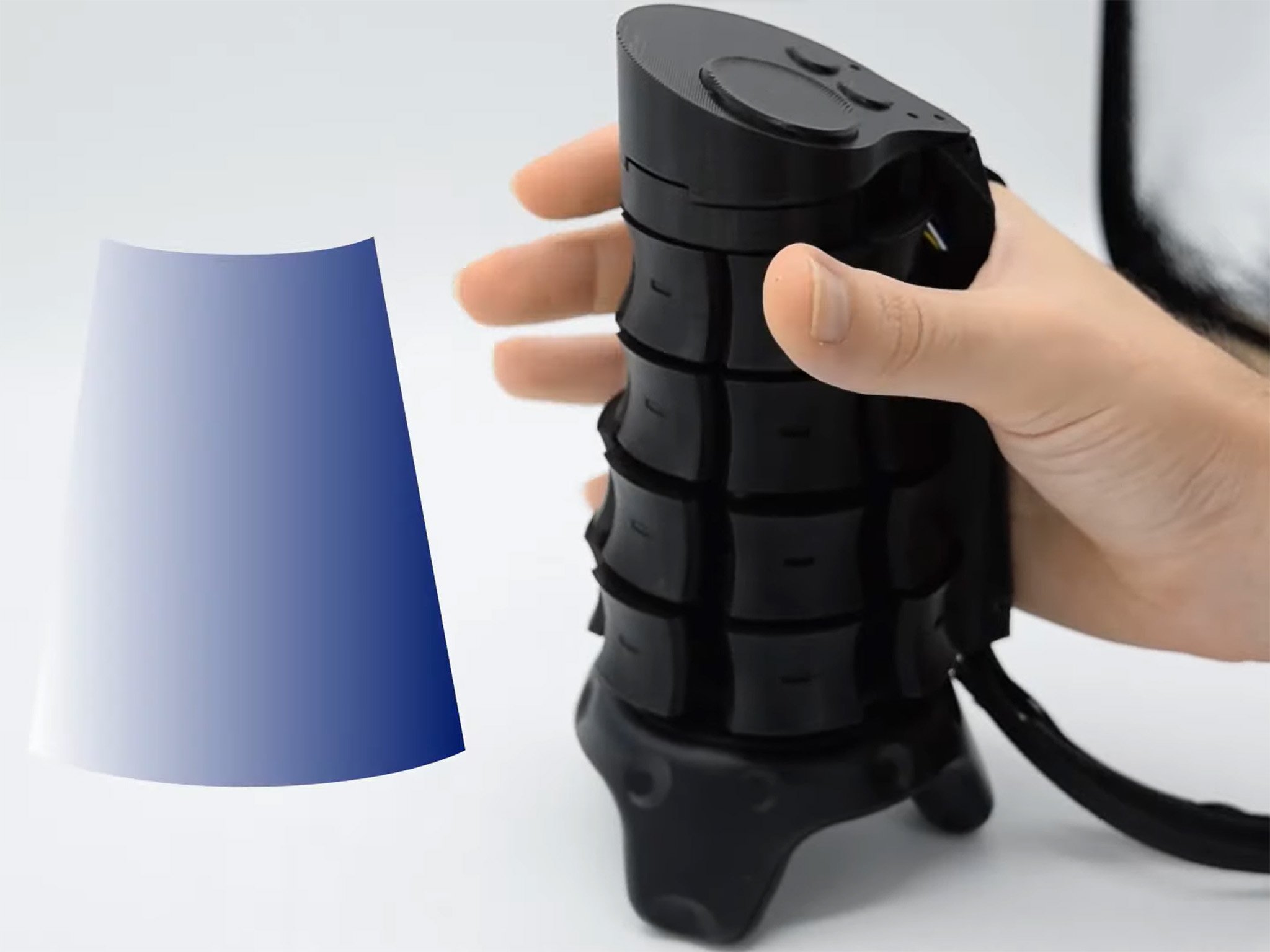The X-Ring controller prototype shows that Microsoft is interested in VR, after all
It can adjust its shape to mimic objects in virtual reality.

What you need to know
- Microsoft Research showed off a new VR controller prototype called X-Rings, which can adjust its radius to mimic the shape of virtual objects.
- Microsoft says its studies show that users can identify objects 80% of the time because of the controller's tactile feel.
- The current model is 3D printed and operating in SteamVR, using Vive Trackers and a Vive Pro 2 headset.
Microsoft has been fairly hands-off on the idea of VR on Xbox, but has supported the idea on Windows PCs in some capacity for years. The best Windows Mixed Reality headsets are largely just a way to play SteamVR games these days, but it seems that Microsoft is still experimenting on VR solutions to work with SteamVR.
Case in point, UploadVR spotted a new video from Microsoft Research that details a brand new transforming controller built upon existing SteamVR standards. This concept, dubbed X-Rings, can adjust its grip size to just about any object you'd look at in VR, from a pear-shaped pot to the hilt of a sword, or even the neck of a bottle.
The controller is made up of four rows of plates arranged in a ring formation around part of the circumference of the controller's grip. These plates can adjust in a 2cm range at an impressive 100ms speed, meaning the adjustment happens in just a few rendered frames. Each of these plates has a capacitive touch sensor so, like the Valve Index controller, it can detect the minutiae of finger movements in VR.

Each plate is also pressure-sensitive, a la the PS5's DualSense controller, and can be used to squeeze objects in a game. Microsoft demonstrated squeezing a pot until it smashed in the video below, which would add quite a bit of immersion factor to an experience. In fact, Microsoft's research showed that users could successfully match an object's shape and feel with a visual representation 80% of the time.
The 3D printed controller sits atop a Vive Tracker so it can be tracked in 3D space, and users in the video are using an HTC Vive Pro 2 headset. Microsoft isn't saying if this prototype will eventually make its way into a consumer-grade product, but the fact that the company is working on such unique, innovative solutions certainly suggests they're actively considering such a possibility in the future.
All the latest news, reviews, and guides for Windows and Xbox diehards.

Nick started with DOS and NES and uses those fond memories of floppy disks and cartridges to fuel his opinions on modern tech. Whether it's VR, smart home gadgets, or something else that beeps and boops, he's been writing about it since 2011. Reach him on Twitter or Instagram @Gwanatu

